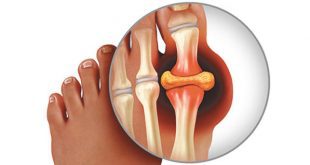By Cherra F. Pumphrey, M.D., HarborSide Internal Medicine –


Sunburn is characterized by red, warm, painful skin that appears within a few hours of prolonged/excessive exposure to ultraviolet light. Intense sun exposure resulting in sunburn increases the risk of developing certain conditions. For example, infection, photoaging (accelerated skin changes caused by sun exposure), actinic keratoses (rough, scaly precancerous patches), skin cancer, and eye damage may result. If someone develops a sunburn, application of aloe vera gel/lotion and cool compresses may alleviate the significant burning sensation associated with more severe sunburns. If a new or changing skin lesion is identified, evaluation by a healthcare professional is advisable as the lesion could potentially be precancerous or cancerous.
Heat exhaustion is caused by water and/or electrolyte depletion, and a person’s body temperature may or may not be elevated. Signs and symptoms of heat exhaustion may include extreme thirst, fatigue, headache, nausea/vomiting, profuse perspiration, clammy skin, dizziness, and tachycardia. A person experiencing (or potentially experiencing) heat exhaustion should sit or lie down in a cool location, consume cool electrolyte-rich fluids and/or water, and apply cool compresses to the body. Emergency medical services should be called if heat exhaustion fails to resolve as this may evolve into a heatstroke.
Heatstroke, the most serious heat-related illness, occurs when the body’s temperature rises to life-threatening levels, potentially damaging vital organs. A person experiencing a heatstroke may lapse into a coma. Permanent organ damage or possibly even death may result from a heatstroke. Some symptoms, which may be indicative of a possible/impending heatstroke, include the following: [1] body feeling extremely warm/hot to touch; [2] irrational behavior and/or aggressive mood; and [3] altered mental status with possible loss of consciousness. If a person is suspected of a possible heatstroke, emergency medical services should be called immediately, and measures should be implemented to try to lower the person’s body temperature (moving the person to a cool location and applying icepacks, for example).
The following recommendations for improving sun-exposure safety have been submitted by the National Safety Council: [1] Sunscreen with SPF of 15 or greater should be used; [2] Cool, protective clothing and a wide-brimmed hat should be worn; [3] A source of water should be easily accessible; [4] Some water should be consumed about every fifteen minutes while in the sun; and [5] Frequent breaks out of the direct sunlight in a cool/shaded area should be taken, particularly during the hottest times of the day. Readers are encouraged to implement appropriate sun-exposure safety measures while enjoying summertime activities.
HarborSide Internal Medicine
941-637-1119
www.harborsideinternalmedicine.com
 Southwest Florida's Health and Wellness Magazine Health and Wellness Articles
Southwest Florida's Health and Wellness Magazine Health and Wellness Articles

